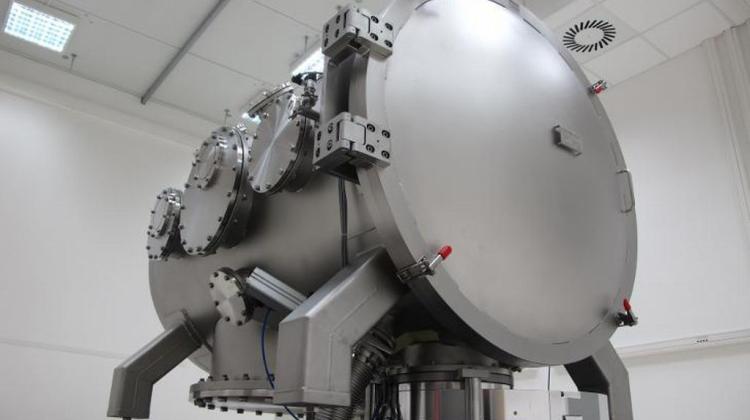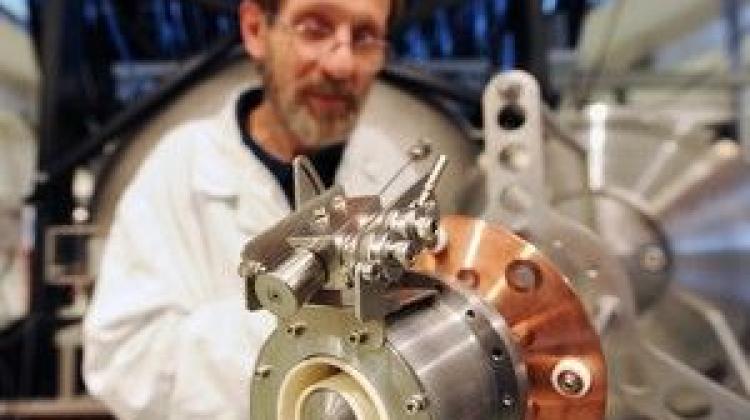New lab in the capital will test satellite thrusters

Poland\'s first satellite and space probe plasma thruster laboratory has opened at the Institute of Plasma Physics and Laser Microfusion (Instytut Fizyki Plazmy i Laserowej Mikrosyntezy, IFPiLM) in Warsaw.
Satellite Plasma Propulsion Laboratory (PlanS) will test satellite plasma thrusters. IFPiLM Director, Dr. Andrzej Gałkowski explained in an interview with PAP that these would be low-power thrusters. Their task is not launching satellites into orbit, but orbit correction or device deorbitation.
The lab plans include a cylindrical vacuum chamber, which will simulate conditions in space. The chamber has a volume of 2 cubic meters, and tested plasma thrusters can operate at ambient pressure more than 100 million times smaller than the atmospheric pressure.
IFPiLM researchers want to test propulsion systems built at the Institute for use in nanosatellites and satellites weighing several kilograms. Thrusters for larger satellites already exist: chemical rocket or cold gas systems. However, until now there have not been any good propulsion solutions for the smallest satellites.
IFPiLM Director explained that plasma thrusters are a new path in propulsion systems development. These thrusters use plasma, sometimes called the fourth state of matter. According to Andrzej Gałkowski if we compared it to the ancient division into four elements, earth would be solids, water - liquids, air gases, and fire would be plasma.
The lab originator Dr Jacek Kurzyna of IFPiLM explained that the plasma was ionized gas. It conducts electricity and responds to electric and magnetic field. This allows to accelerate matter to high speeds and throw it out of the thruster, which makes the machine move.
Prof. Zbigniew Kłos from the Space Research Centre PAS, who attended the laboratory opening, reminded that last year Poland joined the European Space Agency. With ESA membership, propulsion systems developed at IFPiLM have a chance to be used in ESA projects, for example as thrusters for small telecommunications satellites.
According to director Gałkowski, the institute usually works with plasma with temperatures of millions of degrees Celsius, and the plasma used in propulsion thrusters will be much colder.
"Until now we have been trying to bring Sun down to the Earth, and now we brought a piece of space to our lab, exactly 2 cubic meters. The chamber will simulate the conditions in space" - he said.
Specialized satellite plasma thruster laboratory has been established for the project Innovative Liquid Micro Pulsed Plasma Thruster, which is implemented under the 7th European Framework Programme. In addition to the Polish institute, companies from Spain, France, Switzerland and Sweden are involved in the project.
At the international project is completed, the satellite plasma thruster lab vacuum equipment can be used to test medium power thrusters for space probes and conventional satellites.
This class of plasma thrusters includes the recently designed at IFPiLM Krypton Hall thruster, further work on which is carried out under a contract with the European Space Agency.
PAP - Science and Scholarship in Poland
lt/ tot/ mrt/
tr. RL
Przed dodaniem komentarza prosimy o zapoznanie z Regulaminem forum serwisu Nauka w Polsce.















